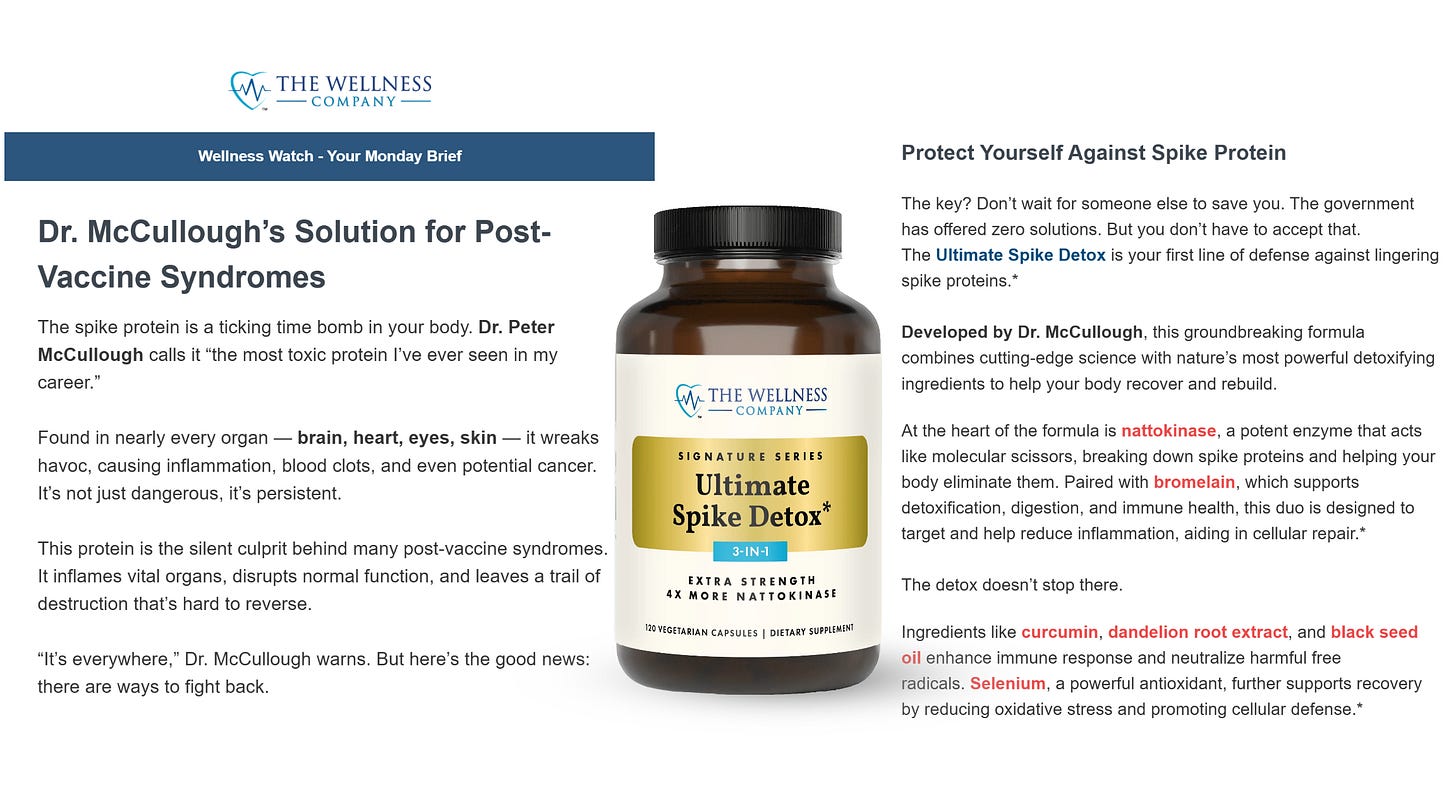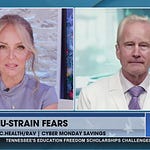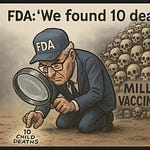By Peter A. McCullough, MD, MPH
Many of us feel that pre-existing arthritis has worsened over the course of the pandemic. Amanda Head asked me on Just the News Real America’s Voice about why this is the case.
Alter AI was used to assist in this piece.
Post‑COVID and Post‑Vaccination Arthritis: Pathogenic Mechanisms and Evidence
Introduction
Since 2020, numerous reports have described new‑onset arthritis following both SARS‑CoV‑2 infection and COVID‑19 vaccination. Patterns include reactive arthritis, viral‑triggered autoimmune arthritides (rheumatoid‑like or psoriatic forms), and short‑lived arthralgia. Though uncommon, these syndromes highlight the virus’s and the vaccine’s capacity to perturb immune tolerance in genetically predisposed individuals.
1. Arthritis After SARS‑CoV‑2 Infection
Frequency and Phenotype
Musculoskeletal pain occurs in 15–45 % of patients during acute infection ¹. A smaller fraction develop post‑infectious arthritis, typically within 1–4 weeks after respiratory recovery. Most presentations mimic reactive arthritis—asymmetric oligoarthritis of lower limbs, sometimes with enthesitis or dactylitis ². Case clusters also document new‑onset rheumatoid arthritis (RA), psoriatic arthritis, and crystal‑induced (gout) flares.
Proposed Mechanisms
1. Molecular mimicry. Sequence homology between SARS‑CoV‑2 epitopes (notably spike and nucleocapsid proteins) and human heat‑shock proteins or cartilaginous peptides may elicit cross‑reactive T‑cell and autoantibody responses ³. Antibodies to SARS‑CoV‑2 spike protein bind type II collagen and nuclear antigens in vitro ⁴.
2. Cytokine activation. COVID‑19’s “cytokine storm” features IL‑1β, IL‑6, TNF‑α, and IL‑17 surges—pathways central to established inflammatory arthritis ⁵. Hyperactivation of the NLRP3 inflammasome and Th17 cells triggers synovial recruitment of neutrophils and macrophages.
3. Viral persistence and bystander activation. Although SARS‑CoV‑2 RNA is rarely found in synovial fluid, autopsy studies reported viral RNA in endothelium and synovial macrophages ⁶, possibly maintaining chronic inflammation through interferon‑driven mechanisms.
4. Genetic susceptibility. HLA‑B27 positivity—typical in reactive arthritis—has been observed in several COVID‑associated cases ⁷.
Clinical Course
The anti-nuclear antibody (ANA), rheumatoid factor (RF), and anti-citrullinated protein antibodies should be checked on blood testing. Most post‑COVID arthritides are self‑limiting, responding to NSAIDs or short courses of corticosteroids, though occasional cases evolve into chronic RA‑like disease requiring DMARDs such as hydroxychloroquine.
2. Arthritis After COVID‑19 Vaccination
Incidence and Association
With billions of vaccine doses administered, transient arthralgia is common (10–20 %), but true inflammatory arthritis remains rare ⁸. Reported entities include reactive arthritis, RA flares, new‑onset RA or PsA, and adult‑onset Still’s disease.
Immunologic Mechanisms
1. Innate immune over‑activation. mRNA vaccine lipids and CpG‑adjuvanted vectors (e.g., ChAdOx1‑S) trigger TLR‑7/8 and TLR‑9 receptors, up‑regulating type I interferons and IL‑6. In predisposed hosts, this “trained immunity” may spill over into autoimmunity ⁹.
2. Molecular mimicry of Spike protein epitopes. Computational analyses show cross‑reactivity between Spike sequences and synovial autoantigens such as ankyrin‑repeat and filamin A domains ¹⁰. This could activate autoreactive T‑cells akin to viral triggers.
3. Autoantibody induction. Transient positivity ABA or RF after mRNA vaccination has been documented ¹¹, though typically without persistent clinical disease.
4. Flare of pre‑existing autoimmunity. Case–crossover studies demonstrate occasional RA or lupus reactivation within 2 weeks post‑vaccine, possibly from immune‑adjuvant cytokine flux ¹².
Representative Evidence
- An et al., Ann Rheum Dis 2022 collated 45 cases of post‑vaccine inflammatory arthritis (mostly mRNA series); median onset 10 days; two‑thirds resolved with low‑dose steroids/NSAIDs.
- Kaur RJ et al., Front Immunol 2022;13:855754 identified ≈ 90 published cases worldwide; pattern and cytokine profiles mimicked reactive arthritis.
3. Comparative Pathogenesis and Outlook
Both infection‑ and vaccine‑related arthritis share immune mimicry, cytokine‑driven inflammation, and genetic predisposition as central mechanisms; viral infection exposes natural antigen load, while vaccination presents highly focused Spike antigen with robust innate priming. Neither cause direct joint infection in most cases. Because vaccination is ineffective, most vaccinated patients have also had SARS-CoV-2 infection. Histology reveals macrophage‑rich synovitis and IL‑6/TNF‑α dominance akin to traditional autoimmune arthritis.
Prognosis
The majority of cases resolve within months under conservative therapy; severe autoimmune progression is unusual. Ongoing epidemiologic registries and cohort studies are warranted.
Treatment
McCullough Protocol Base Spike Detoxification handles the root cause as well has provides anti-arthritic doses of curcumin. Additional curcumin can be administered and titrated optimal control over pain. For osteoarthritis or inflammatory arthritis, curcumin ≈ 1000–1500 mg/day (as standardized curcuminoids, divided doses)—the regimen used by Haroyan et al., 2018 (Phytother Res)—is the best‑supported daily dose showing NSAID‑comparable pain relief with excellent safety. Additionally prescription colchicine and hydroxychloroquine are commonly used for several months but rarely more than a year.
Please subscribe to FOCAL POINTS as a paying ($5 monthly) or founder member so we can continue to bring you the truth.
Peter A. McCullough, MD, MPH
Chief Scientific Officer, The Wellness Company
References
1. Zayet S et al. Clin Rheumatol. 2022;41:331‑338.
2. Mukarram M et al. Clin Rheumatol. 2021;40:4037‑4042.
3. Lucchino B et al. Front Immunol. 2022;13:994512.
4. Vojdani A, Kharrazian D. J Immunol Res. 2020;2020:3640514.
5. Fajgenbaum DC et al. N Engl J Med. 2020;383:2255‑2273.
6. Pitzalis C et al. Ann Rheum Dis. 2021;80:1095‑1100.
7. Hassan S et al. Rheumatol Int. 2021;41:1249‑1256.
8. Cantu R et al. Arthritis Rheumatol. 2023;75:1154‑1160.
9. Iwasaki A, Omer SB. Nat Rev Immunol. 2020;20:615‑632.
10. Angeli F et al. Front Immunol. 2022;13:927356.
11. Mei Y et al. Arthritis Care Res. 2022;74:2003‑2008.
12. Watanabe T et al. Lancet Rheumatol. 2023;5:e90‑e99.












